23 Apr UnGuided/ UnBounded/ Wireless Transmission Media in Computer Networks
Unguided/ Unbounded communication is wireless transmission. The cables such as twisted pair, coaxial, etc are of no use for wireless transmission. It comes under the Guided/ Bounded/ Wired Transmission Media. To exchange bits of data for laptop, notebook, smart watch, without wires, you need wireless communication. Let us learn about UnGuided Transmission Media in Computer Networks
Transmit electromagnetic waves without using a physical conductor using Unguided Media and broadcast signals through air (wireless).
Advantages of Unguided/ Unbounded Transmission Media
- Users communicate while travelling in trains, metro and bus.
- Users communicate while walking using unguided media (wireless)
- Even Gigantic buildings and mountains will not be able to stop wireless communication. Large distances can be easily covered.
Let us learn about Unguided/ UnBounded Transmission Media here, Unbounded Transmission.
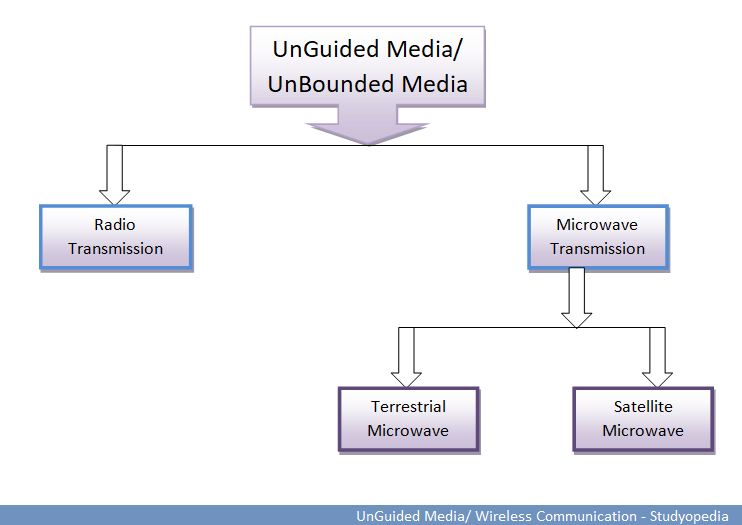
Radio Transmission
Radio Transmission is used globally for communication both indoors and outdoors. Radio waves travels long distances and even penetrate buildings with ease, with its omnidirectional feature. Omnidirectional travel in all the directions, avoiding the need to align transmitter and receiver.
Radio communication has eight ranges, also called bands, and all regulated by government authorities. Let’ see how they are rated in communication,
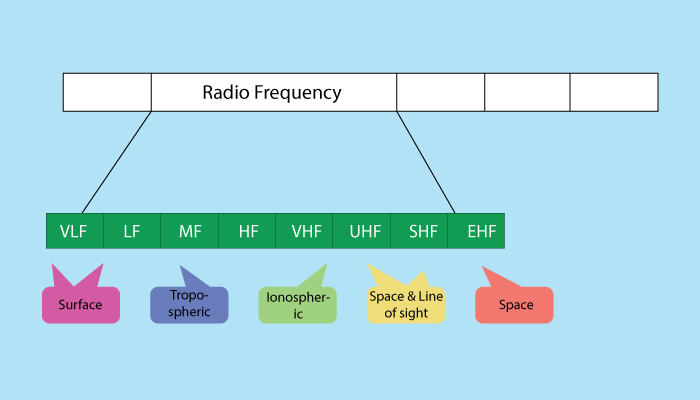
The following are the radio frequencies,
- VLF
Very Low Frequency for submarine communication - LF
Low Frequency for long-range navigation. - MF
Middle Frequency for AM radio. - HF
High Frequency for long distance ship and aircraft communication. - VHF
Very High Frequency for FM radio. - UHF
Ultra High Frequency for Television, mobile telephone communication. - SHF
Superhigh frequency for terrestrial and satellite microwave. - EHF
Extremely high frequency for radar.
Now, let us learn about propagation for radio wave transmission,
Troposphere
The portion of the atmosphere that consists of weather, wind, cloud and contains air. Troposphere is approximately 30 miles from earth’s surface.
Ionosphere
The layer beyond atmosphere and is called Ionosphere since it has free electrically charged particles.
Surface Propagation
The radio waves travel in sea water or through the lowest portion of the atmosphere.
Tropospheric Propagation
A signal directed in a straight line from antenna to antenna. The placement of the transmitter and receiver should be in line-of-sight.
Ionospheric Propagation
The higher frequency radio waves radiate upward into the ionosphere. It is reflected back to earth.
Line-of-sight Propagation
Very high frequency signals are transmitted. The transmission occurs in straight lines directly from antenna to antenna.
Space Propagation
The broadcast signal received by orbiting satellite, rebroadcasts the signal to the planned receiver back to the earth.
Microwave Transmission in Computer Networks
Microwave transmission use lower gigahertz frequency of the electronic magnetic spectrum. They require line-of-sight transmission, since they do not follow the curvature of earth.
The signals in Microwave transmission propagates in a single direction at a time. The following are the types of Microwave Data Communication,
- Terrestrial Microwave
- Satellite Communication
Let us see them one by one.
Terrestrial Microwave
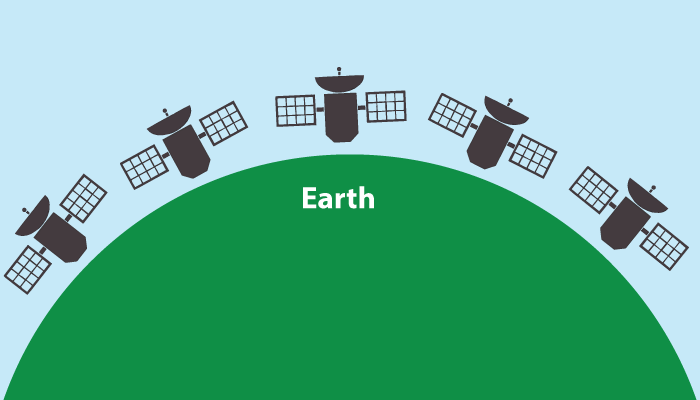
The following two antennas are used for terrestrial Microwave,
Parabolic Dish Antenna
The parabolic dish antenna is based on the line of symmetry. Lines paralle to the line of sight gets reflect off the curves at angles intersecting at focus.
The antenna catches a wide range of waves like a funnel as you can in the below figure. The waves are directed to a common point.
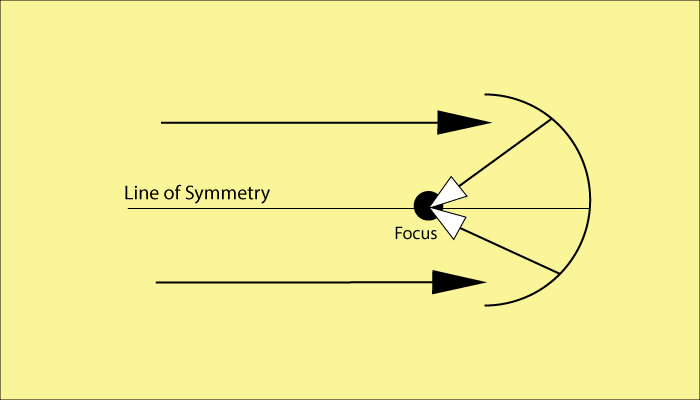
Horn Antenna
Using a horn antenna, the outgoing (sending) transmission is broadcasted up a stem. The deflection is outwards in a series of narrow parallel beams.
The horn’s scooped shape collects the incoming (receiving) transmission. The deflection is downwards in to the stem.
Satellite Communication
Satellite microwave systems are placed in outerspace like a microwave relay station. The satellites are launched into the outer space by rockets or spaceshuttles.
Satellites are positioned 3600km above the equater. The orbit speed matches the rotation speed of our planet earth.
Geosynchronous Orbit (GSO)
The orbit around the earth of a satellite with a speed that matches the earth’s rotation on its axis is called geosynchronous orbit. For constant communication, the satellite should move at the same speed as the earth.
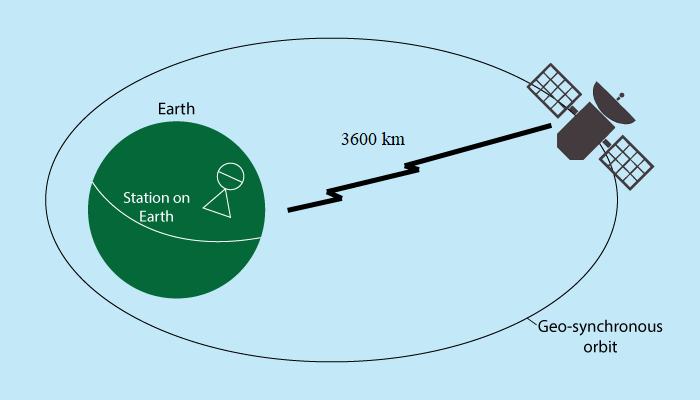
Geosynchronous orbit occurs at an altitude of approximately 35,786 km (22,236 mi) above mean sea level.
Let us see how satellites look in a Geosynchronous orbit,
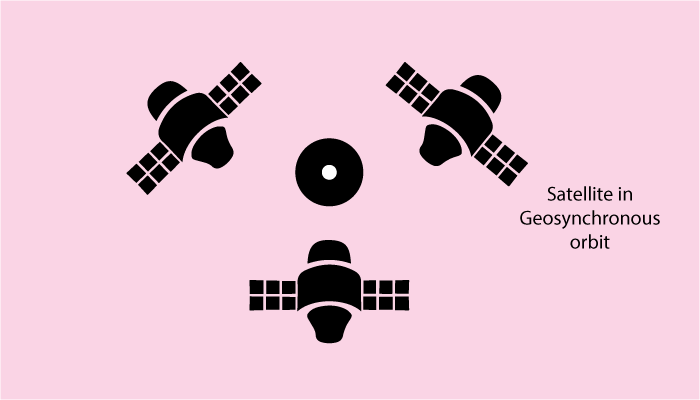
As shown above, a minimum of three satellites provides full transmission, if they are equidistant from each other in geosynchronous orbit.
Satellite communication is capable enough for transmission to and from any location on earth (even remote). This remarkable feature allows satellite communication to reach even remote and undeveloped countries.
Advantages of Satellite Communication
- Satellite Communication is beneficial and a single microwave relay station easily visible from anywhere and any point.
- If the satellite has transmitted information incorrectly, the data would be transmitted again. A transmitting station will not create any issues in receiving back its own transmission and will check for any discrepancies.
- The transmission and reception cost between two points are independent.
Disadvantages of Satellite Communication
- The cost of satellite communications is high since placing of satellite into the orbit is not cheap.
- The cost of launching a satellite is huge.
- Security is essential to avoid unauthorized tempering of information.
- Weather conditions affect transmission of signals.
If you liked the tutorial, spread the word and share the link and our website Studyopedia with others.
For Videos, Join Our YouTube Channel: Join Now


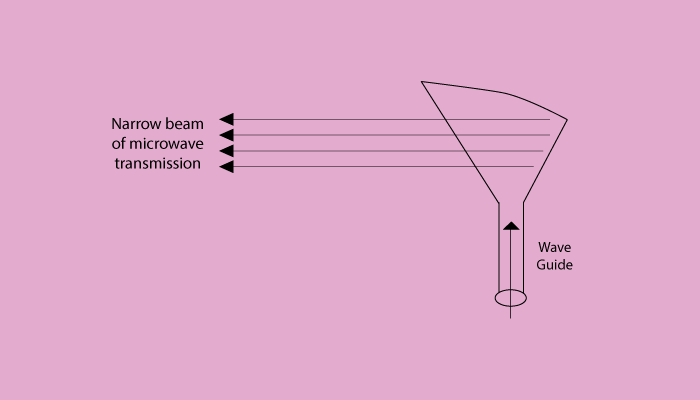
No Comments